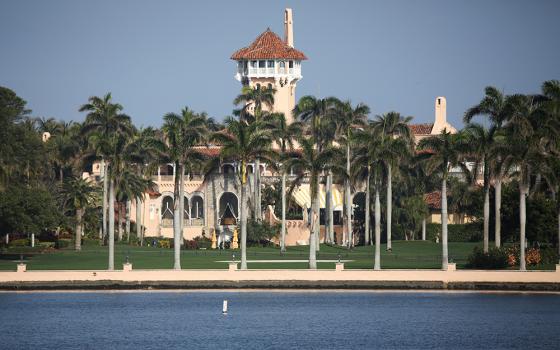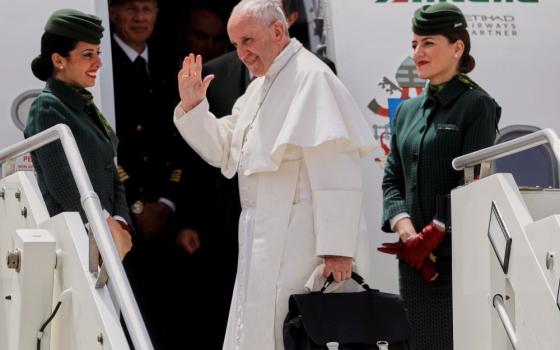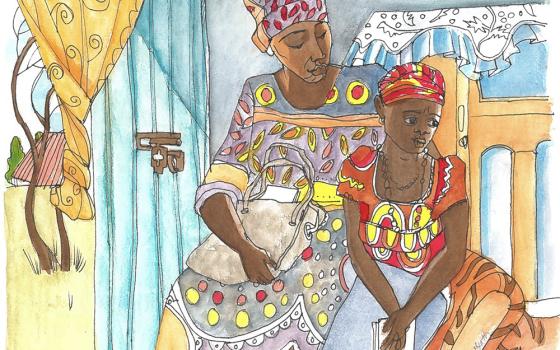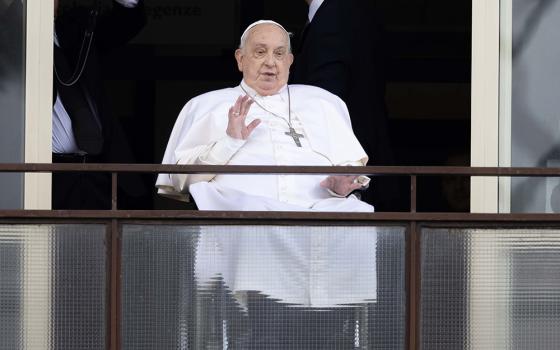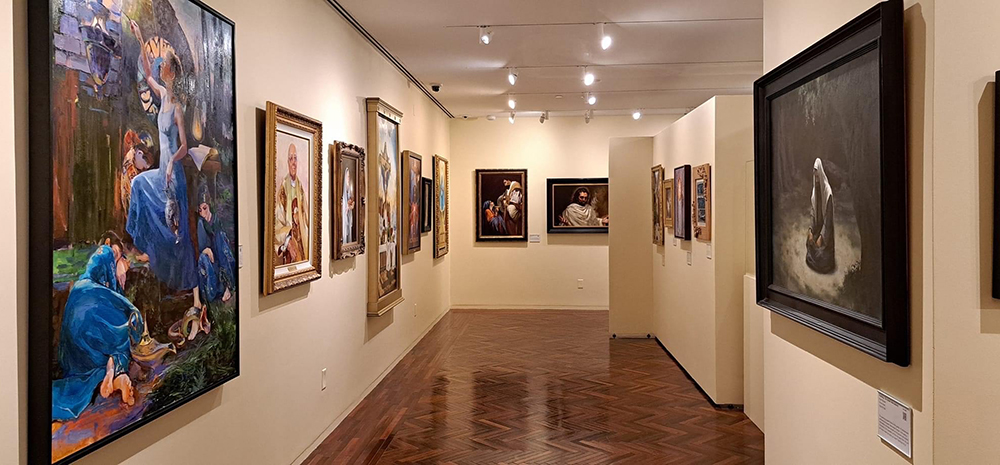
The "Do This in Memory of Me" exhibition runs through Aug. 25 at the Blessed Michael McGivney Pilgrimage Center in New Haven, Connecticut. Selected works will be shown at the Sacred Art Institute booth at the National Eucharistic Congress in Indianapolis July 17-21. (Dan DeLouise)
More than 100 contemporary visual pieces were selected from all over the country to be part of the National Eucharistic Sacred Art Exhibit, "Do This in Memory of Me" — but it began with one artist on a tiny 11-acre island off of Mystic, Connecticut.
Enders Island is the home of St. Edmund's Retreat, a welcoming Catholic community whose 360-degree seascape creates a healing refuge for all seekers. Among other charisms, St. Edmund's is home to the Sacred Art Institute, which offers immersive, hands-on workshops such as iconography, traditional stone carving and creating stained glass.
Dan DeLouise, the artist in residence at the institute, had been reflecting on his own experience as a painter of sacred art when news of the National Eucharistic Revival ignited a connection in his brain.
"I realized that there is a hunger for the sacred," DeLouise shares, and in musing on the Eucharistic Revival, he realized it posed a "great moment and opportunity. ... Sacred art moves people."
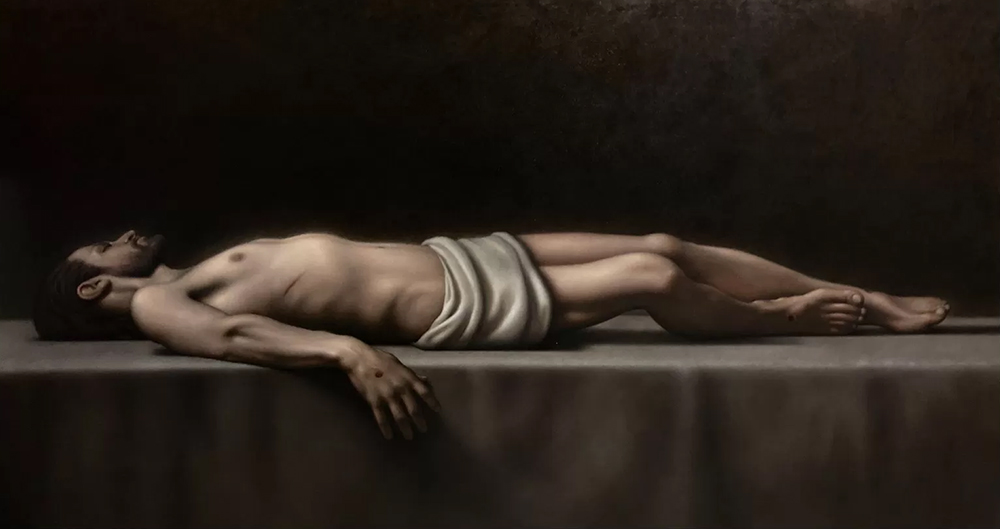
"Entombment" by Robert Armetta is a nearly life-size portrait, approximately 6 feet long and 4 feet high. Arnetta earned first place in the show for his evocative portrayal of Christ in the grave. (Courtesy of St. Edmund's Retreat)
After DeLouise began to form the idea of an exhibit on the island, it gathered momentum and widened in scope. The Sacred Art Institute then received support from the National Eucharistic Congress, the National Eucharistic Revival Team and the Blessed Michael McGivney Pilgrimage Center.
When the call for art submissions went out with a list of possible themes, the interpretation remained broad under the institute's vision: "Anything Christ-centered is the Eucharist."
Submissions began to pour in. In all, 650 works by more than 300 artists were submitted to the show. DeLouise had the tough task of winnowing the entries down to 100.
First, a select sampling was showcased on Enders Island, and then the full show moved to the Blessed Michael McGivney Pilgrimage Center in New Haven, Connecticut, where it opened on May 31 and will remain through Aug. 25.
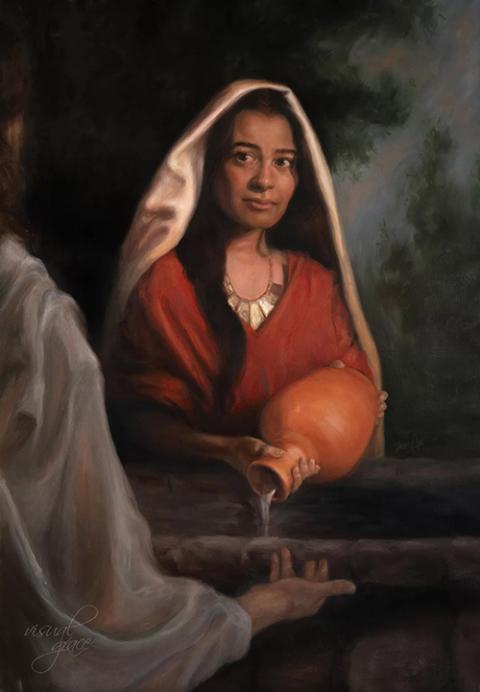
"The Well," an oil painting by Kate Capato, won second place in the show. (Courtesy of St. Edmund's Retreat)
The intertwining of beauty and the desire for God radiates from each wall and corner. "Entombment," by Robert Armetta, earned first place in the show for its evocative portrayal of Christ in the grave that invites the viewer into somber contemplation. Armetta, a master anatomist, created a nearly life-size portrait, approximately 6 feet long and 4 feet high.
Another crowd favorite is "The Well," an oil painting by Kate Capato, whose work is deeply influenced by studying the painters of the Italian Renaissance in Florence for two years. "I was blown away by the beauty in the churches, let alone on every street corner," she recalls. "I felt God's presence on a whole new level. Beauty in this life is a taste of God's own precious beauty."
"The Well" mesmerizes and ignites an ember in the viewer, earning it the second place prize. The portrait is one of a human face seeing into — and being seen by — the face of the Divine. The tranquil electricity in their gaze offers us a vibrant and inspiring viewpoint on this beloved Gospel story.
Capato reflects on her piece: "What is it like to have Christ look into your soul and know your past, present and future? She returns the water she drew now, recognizing it is not what she truly longs for, but Christ is whom she has been seeking."
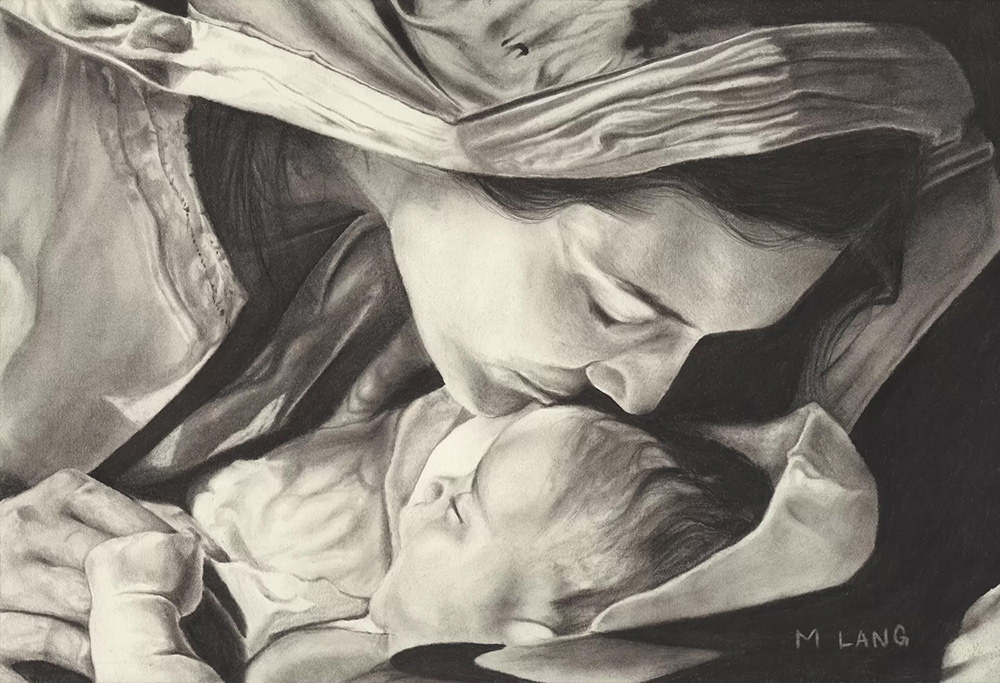
Artist Mia Lang's "A Mother's Heart," created with charcoal and graphite, was recognized for "excellence in drawing." (Courtesy of St. Edmund's Retreat)
Artist Mia Lang's "A Mother's Heart" was recognized for excellence in drawing. The charcoal and graphite image is tenderly rendered in the shaded orb of the baby's forehead, and in Mary floating above, breathing him in. Mary, Lang reflects, is "compassionate towards us in the same way she cared for her son when he was vulnerable as an infant."
On the other side of that gallery wall hangs the explosive red of Ewa Krepsztul's "The Word Became Flesh Triptych." The circles, the delicate hands reaching and the wet-looking bloodstain all serve to create a boldness and originality in the piece that is almost unnerving. The piece was deservedly recognized as the "most Eucharistic" in the show.
Krepsztul shares that her motivation for entering the competition was "to show our beautiful God alive in my paintings."
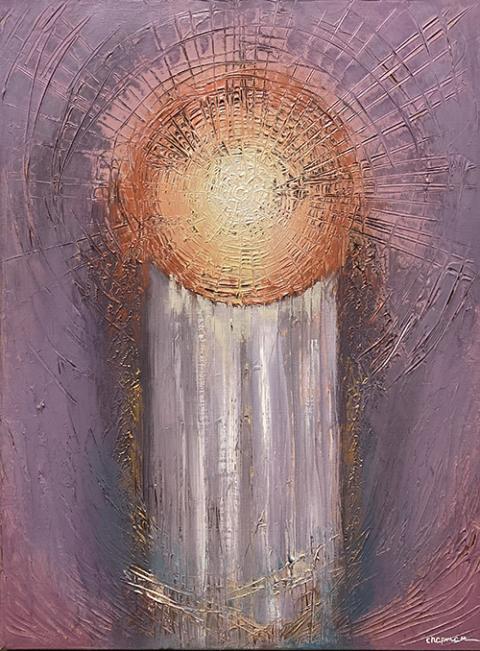
"Your Heavenly Word Came Down," by Br. Kenneth Chapman of the Congregation of Christian Brothers (Maureen O'Brien)
"Your Heavenly Word Came Down," by Br. Kenneth Chapman of the Congregation of Christian Brothers, is a stirring image of the Eucharist. At first glance, the colors and movement create a painting that seems abstract. But then, becoming drawn in, the hues and shapes began to shift. The eternal beauty of a sun-like Eucharist glows, and, radiates down, as the artist says, "with silver streams, a shower of grace."
Chapman's choice to accentuate the ridged textures of the paint adds a tactile element, just as the Eucharist does: We want to reach out and touch it.
Standing in front of all these treasures, I wondered which select few were going to take yet another pilgrimage from the Blessed Michael McGivney Pilgrimage Center and be shipped out to the National Eucharistic Congress. DeLouise told me that, as the logistics of the space became clear, while some of the smaller works are still going to be included, all 100 were going to be featured, as projected images fading in and out, onto a 10- to 20-foot wall.
There's an aspect of the Eucharist in the show itself, how it connects to that abundant miracle, the loaves and fishes. Bringing two fish and five loaves to feed thousands parallels how each artist went deep inside his or her own heart, using craft, skill and passion to outwardly bring forth precious, innermost beliefs. The pieces viewed together form a hypnotic, collective beauty, feeding thousands who hunger for it. This is the blessing of artists joining together and generously sharing.
Deacon Francis Valliere, the coordinator of the Sacred Art Institute, sums up what is, essentially, at the heart. "We want to get across to people that God's beauty can help heal them."
Advertisement
One emerging artist in particular exemplifies Valliere's words. Elliot Chance's linocut "Jesus Walking on Water" takes its inspiration from Matthew 14:25-27, with Jesus coming toward us, palm lifted, hand outstretched.
There's a palpable tension between the rolling, horizontal movement of the black and white flow of the water and Jesus' vertical steadiness within the wafer-like span of the sun.
"I choose to weave themes of the Gospel into my work as I reflect on my own spirituality and process my own perception of reality," Chance said. "Not only as a new artist, but as an artist with mental illness, to be a part of a show of this magnitude is life-changing. I hope my art and story can show the transformative power of faith as well as empower those that suffer from mental illness. With far too much negativity ingrained in our everyday society, to strive to stay in the light is all I can do."
The "Do This in Memory of Me" exhibition runs through Aug. 25 at the Blessed Michael McGivney Pilgrimage Center in New Haven, Connecticut. Admission is free. Selected works can be found in the Sacred Art Institute booth 118 at the National Eucharistic Congress in Indianapolis July 17-21.
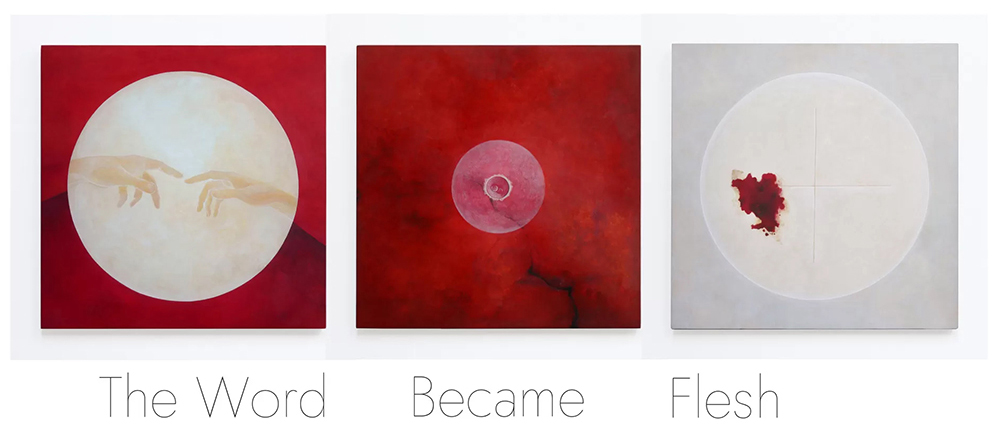
Ewa Krepsztul's "The Word Became Flesh Triptych" was recognized as the "most Eucharistic" in the show. (Courtesy of St. Edmund's Retreat)

